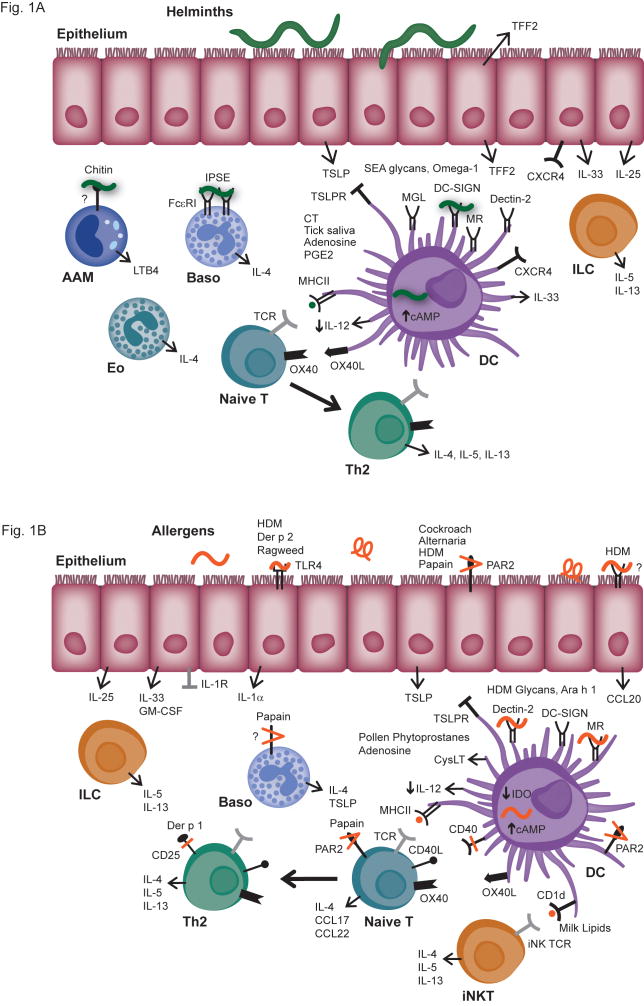Fig. 1.
Fig. 1A. Pathways of innate immune activation associated with helminth infection.
Epithelial cells of the respiratory and gastrointestinal tract have been shown to produce several factors in response to helminth infection, including trefoil factor 2 (TFF2), TSLP, IL-25, and IL-33, all of which have been implicated in Th2 inflammation. In the airways, TFF2 signals via the putative receptor CXCR4 on respiratory epithelium, alveolar macrophages, and DC subsets. TSLP affects multiple cells, including basophils, DCs and lymphocytes to promote Th2 responses; on DCs, TSLP induces the expression of OX40L which can subsequently lead to Th2 differentiation of naïve T cells. IL-25 and IL-33 have important effects as well on a number of cells, but have particularly been shown to be involved in the activation of innate lymphoid cells (ILCs) to produce IL-5 and IL-13. A number of molecules derived from eggs of the parasite S. mansoni have been shown to directly stimulate innate immune cells, resulting in Th2-type responses. This includes the glycoprotein IPSE/alpha-1, which activates basophils via a non-polymorphic domain of IgE, other glycans that contribute to alternative activation of DCs via C-type lectin receptors (CLRs), and the ribonuclease omega-1 which activates DCs through an undefined receptor, resulting in Th2-skewing. A key event in promoting Th2 differentiation appears to be inhibition of IL-12 production by DCs, which is mediated by TSLP, certain helminth-derived products, as well as by CT and components in tick saliva, which act through induction of cAMP.
Fig. 1B. Pathways of innate immune activation associated with allergen exposure. Several of the same signaling pathways observed to promote Th2 immunity in the context of helminth infection are implicated in allergy. TSLP, IL-25 and IL-33 are induced by exposure to a variety of aeorallergens including those of house dust mite (HDM) and cockroach. Glycoallergens from HDM and peanut are recognized by CLRs expressed on DCs to induce alternative activation and promote Th2-skewing of CD4+ T cells. The proteolytic activity of Der p 1, papain and other allergens appears to be an important Th2-inducing signal, as Der p 1 cleaves CD40 and CD25, and protease allergens signal through protease-activated receptor 2 (PAR2) and other as yet unknown targets on epithelium and other innate immune cells. Der p 2 and ragweed allergen signal through TLR4 on epithelium and DCs, and several allergens inhibit production of IL-12 via induction of TSLP, cAMP, or other pathways, resulting in enhanced Th2 differentiation.

